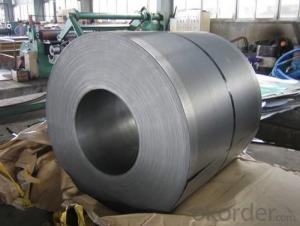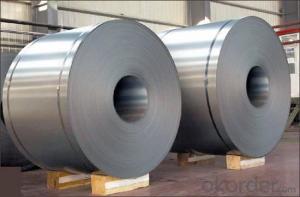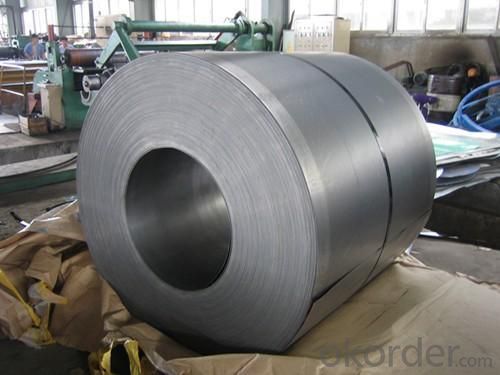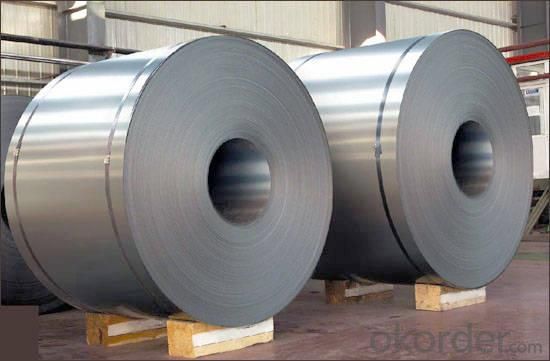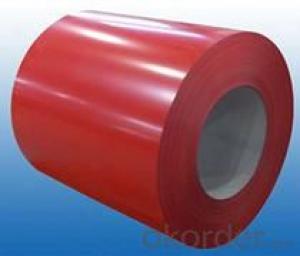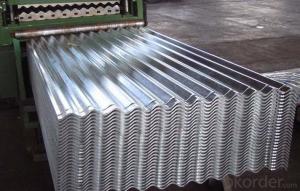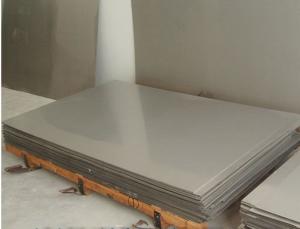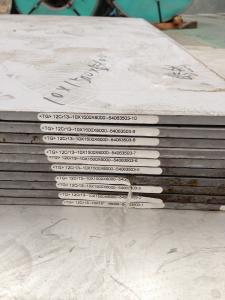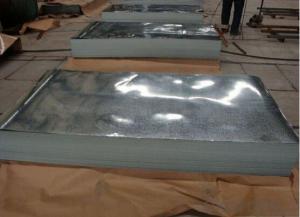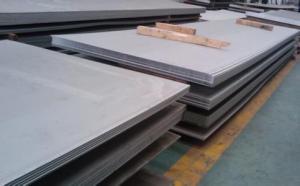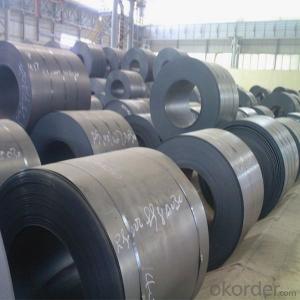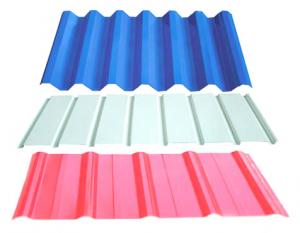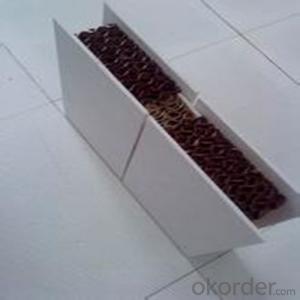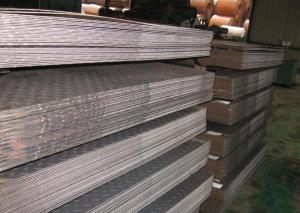cold rolled steel sheet with competetive price
- Loading Port:
- Tianjin
- Payment Terms:
- TT OR LC
- Min Order Qty:
- 500 m.t.
- Supply Capability:
- 10000 m.t./month
OKorder Service Pledge
OKorder Financial Service
You Might Also Like
Quick Details
Standard: ASTM, DIN, GB, JIS
Grade: SPCC
Place of Origin: Hebei, China (Mainland)
- Type: Steel Coil
Technique: Cold Rolled
Surface Treatment: Other
Application: Other
Technique: Cold Rolled
Surface Treatment: Coated
Packaging & Delivery
| Packaging Details: | mill standard |
|---|---|
| Delivery Detail: | 25 days after receiving the deposit |
Specifications
Hot rolled sheet in coil: Specification 2.0mm-15.5mm;
Material: Q235, SS400, SPHC, 16Mn, 16MnR, 20G, 65Mn.
.Sales of the steel products
1. Steel pipes
(1) Seamless steel pipe: material 20#, 45#, 16Mn; Specification dia:57mm-dia:630mm.
(2) High-frequency welded pipe: material Q235A/B; Specification dia:15mm-dia:159mm.
(3) Galvanized pipe: material Q235A/B; Specification dia:15mm-dia:80mm.
(4) Stainless steel pipe: material 304, 316, 321, 430; Specification dia:15mm-dia:159mm.
(5) Cast iron pipe: material is spherulitic graphite cast iron, 18#, 22# pig iron.
2. Steel plate
(1) Cold rolled sheet in coil, cold rolled sheet in box: Specification 0.4mm-3.0mm; Material: ST12, SS400, SPHC.
(2) Hot rolled sheet in coil: Specification 2.0mm-15.5mm;
Material: Q235, SS400, SPHC, 16Mn, 16MnR, 20G, 65Mn.
(3) Medium plate: Specification 8.0mm-100mm; Material Q235, 65Mn, 16MnL.
(4) Galvanized sheet: Specification 0.4mm-3.0mm
(5) Stainless steel sheet: Specification 0.3mm-2.0mm; Material 304, 316, 321, 430.
3. Steel section
(1) Angle bar (equal angle and unequal angle)
Specification: 25*25*3, 30*30*3/4, 40*40*4, 50*50*5, 63*63*6, 100*63*10, 125*80*12, 200*125*18.
(2) I-beam: 12mm-560mm
(3) Channel bar: 8mm-450mm
(4) H-beam: various
(5) Steel billet: 120, 150, 200, 300, 400.
(6) Light rail, heavy rail, crane rail: Various specifications and material
4. Steel wire
(1) Wire rod: Specification dia:6.5, 8, 10mm; Material Q235, Q195, 65Mn, H08A.
(2) Deformed steel bar: Specificationdia:16-dia:32; Material 20MnSi.
(3) Round bar: Specification dia:12-dia:300mm; Material Q235, 45#, 16Mn, 40Cr, 35CrMo
- Q: Can steel sheets be used in outdoor applications?
- Yes, steel sheets can be used in outdoor applications. Steel is a highly durable and weather-resistant material, making it suitable for various outdoor purposes such as roofing, siding, fencing, and construction projects. Its strength and resistance to corrosion make it an ideal choice for enduring harsh weather conditions and providing long-lasting performance.
- Q: What is the difference between a laminated and non-laminated steel sheet?
- Laminated steel sheets, which are produced by bonding multiple layers of steel with adhesive or resin, are known for their increased strength and durability. This lamination process enhances their resistance to bending, impact, and corrosion. Additionally, it reduces noise and vibration in applications like automotive bodies or construction materials. In contrast, non-laminated steel sheets consist of a single layer of steel without undergoing the lamination process. While these sheets are still robust and long-lasting, they may not possess the same level of resistance to bending, impact, and corrosion as laminated steel sheets. They are commonly used in roofing, siding, and general fabrication. The key distinction between laminated and non-laminated steel sheets lies in their composition and properties. Laminated steel sheets offer superior strength, durability, and resistance to various forces, making them ideal for demanding applications where structural integrity is crucial. On the other hand, non-laminated steel sheets are more cost-effective and suitable for applications where high strength and durability are not the primary requirements.
- Q: How do steel sheets perform in terms of vibration resistance?
- Due to their high stiffness and density, steel sheets generally exhibit excellent vibration resistance. The strong and rigid structure of steel enables it to effectively dampen vibrations, thereby enhancing its ability to resist a wide range of vibrations and minimize their amplification, a quality that is not found in other materials. Moreover, steel sheets can be further improved in terms of vibration resistance by employing techniques like incorporating damping materials or utilizing special coatings. As a result, steel sheets are widely regarded as a dependable option for applications that demand vibration resistance.
- Q: How are steel sheets protected during storage in humid environments?
- Steel sheets are typically protected during storage in humid environments through a process known as corrosion prevention. This involves implementing various measures to minimize the exposure of the steel sheets to moisture and humidity, which are the primary factors that contribute to corrosion. One common method is the application of a protective coating on the steel sheets. This coating acts as a barrier between the steel and the surrounding moisture, preventing direct contact and minimizing the risk of corrosion. There are different types of coatings available, such as paint, oil, or a specialized corrosion-resistant coating, depending on the specific requirements and conditions of the storage environment. In addition to protective coatings, steel sheets can also be stored in a controlled environment with regulated temperature and humidity levels. This helps to minimize the amount of moisture in the air surrounding the steel sheets, reducing the likelihood of corrosion. This controlled environment may be achieved through the use of dehumidifiers or climate-controlled storage facilities. Furthermore, proper handling and packaging of the steel sheets can also play a crucial role in protecting them during storage in humid environments. The sheets should be stored in a way that allows for adequate airflow and ventilation to minimize the accumulation of moisture. They should also be packaged in materials that provide an additional layer of protection against moisture, such as plastic wraps or moisture-resistant packaging materials. Regular inspection and maintenance are also important to ensure the ongoing protection of steel sheets during storage in humid environments. This includes checking for any signs of corrosion or damage and promptly addressing them to prevent further deterioration. Overall, a combination of protective coatings, controlled storage environments, proper handling, and regular maintenance are essential in safeguarding steel sheets from the effects of humidity and moisture during storage.
- Q: Are the steel sheets resistant to graffiti or vandalism?
- Steel sheets possess a high level of resistance against graffiti or vandalism. Thanks to their sturdy and long-lasting nature, steel sheets act as a formidable deterrent against acts of vandalism or graffiti. The sleek surface of steel sheets poses a challenge for vandals attempting to adhere spray paint or other graffiti materials. Even if they manage to apply it, the paint can be effortlessly removed using appropriate cleaning techniques, leaving no trace behind. Furthermore, steel sheets exhibit exceptional resistance against scratching or etching, effectively preventing any form of vandalism. In conclusion, opting for steel sheets on surfaces prone to graffiti or vandalism provides outstanding protection and reduces the need for costly repairs or repainting.
- Q: Are steel sheets suitable for automotive applications?
- Yes, steel sheets are suitable for automotive applications. They are commonly used in the automotive industry due to their high strength, durability, and affordability. Steel sheets provide structural integrity and crash protection in automobiles, making them a preferred choice for various automotive components such as body panels, chassis, and reinforcements.
- Q: What are the common tolerances for steel sheets?
- The common tolerances for steel sheets typically vary depending on the specific application and industry standards. However, some common tolerances for steel sheets include thickness variations, flatness, and width and length dimensions. These tolerances are often specified in accordance with recognized industry standards such as ASTM (American Society for Testing and Materials) or ISO (International Organization for Standardization).
- Q: What's the difference between single rolling steel sheet and continuous rolling steel plate?
- Single rolled steel plate usually refers to medium plate, in the process of rolling and finishing, the plate has been flat, usually thicker (6mm or more), the width of the fastest up to 4800mm.
- Q: Are steel sheets suitable for agricultural applications?
- Yes, steel sheets are suitable for agricultural applications. Steel is a durable and versatile material that offers excellent strength and resistance to corrosion, making it ideal for various agricultural uses such as barns, sheds, fencing, and equipment storage.
- Q: Can steel sheets be used for industrial machinery or equipment?
- Yes, steel sheets can be used for industrial machinery or equipment. Steel sheets are commonly used in the manufacturing and construction industries due to their strength, durability, and versatility. They can be fabricated into various shapes and sizes to suit the specific requirements of different machinery or equipment, making steel sheets a reliable choice for industrial applications.
Send your message to us
cold rolled steel sheet with competetive price
- Loading Port:
- Tianjin
- Payment Terms:
- TT OR LC
- Min Order Qty:
- 500 m.t.
- Supply Capability:
- 10000 m.t./month
OKorder Service Pledge
OKorder Financial Service
Similar products
Hot products
Hot Searches
Related keywords
